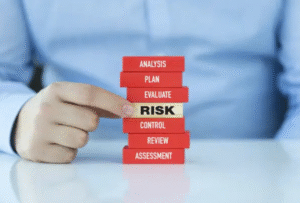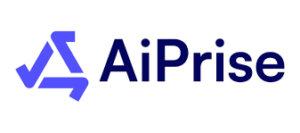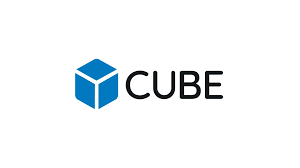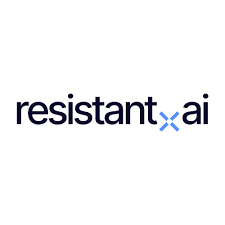Tariffs, Trade, and Turbulence: Enterprise Risk Management in an Era of Protectionism

On March 26, 2025, Trump signed a proclamation imposing 25% tariffs on imported vehicles, effective April 3. Enterprise risk management teams learned an expensive lesson: their carefully built risk frameworks couldn’t move fast enough. Traditional enterprise risk management assumes policy changes incrementally, giving companies time to model scenarios and prepare responses. That assumption is dead.
The challenge facing risk managers isn’t the tariffs themselves. It’s that manual risk assessment has become obsolete when trade policy can pivot overnight. Spreadsheet models take weeks to build and are outdated before they’re finished. Quarterly supplier reviews miss policy changes that arrive between meetings. For companies managing global operations, the gap between the speed of risk and the speed of analysis has become unbridgeable without technology.
The Scale of the Problem
The U.S. administration’s tariff program is massive: 10% universal tariffs on many imports, 25% on automobiles, new levies on electronics and solar components. A U.S. Chamber of Commerce survey found that 70% of small businesses reported paying higher prices for goods and services they buy, with about 60% raising their own prices in response. In a CNBC SurveyMonkey poll, 51% of small business owners said they expect trade policy changes to negatively affect their business over the next 12 months.
But the real complexity isn’t the tariff rates. It’s the cascading effects through multi-tier supply chains that nobody can track manually. Walmart has seen costs increase with each inventory replenishment cycle at post-tariff price levels, with CEO Doug McMillon warning in May 2025 that these increases will continue into the third and fourth quarters. The challenge isn’t just direct imports. It’s tier-two and tier-three supplier exposure that traditional procurement systems never mapped. A tariff on a component manufacturer in Shenzhen halts production in Ohio, and nobody sees it coming until the line stops.
This is exactly the problem technology is solving. Not making existing risk processes faster, but enabling risk visibility that was previously impossible.
Real-Time Risk Intelligence
Resilinc’s platform represents the new infrastructure for supply chain risk management. Their AI-driven system maps multi-tier supplier networks automatically, tracing component origins through tier-two and tier-three relationships that procurement teams would take months to manually document.
The critical capability is real-time policy monitoring. When a tariff announcement drops, Resilinc’s Agentic AI cross-references it against a company’s entire supplier network, identifies which products are affected, calculates landed cost impacts across different sourcing scenarios, and recommends mitigation strategies. Companies using the platform learn about their exposure within hours instead of weeks.
This isn’t just faster analysis. It’s a fundamentally different approach to risk management. Traditional enterprise risk management identifies risks periodically. AI-powered platforms operate continuously, monitoring thousands of data sources simultaneously: trade policy announcements, supplier performance metrics, logistics disruptions, geopolitical developments, commodity prices.
The system doesn’t wait for quarterly reviews. It detects pattern changes, flags anomalies, and triggers alerts when risk thresholds breach. For risk managers, this shifts the job from conducting periodic assessments to operating a continuous monitoring system.
Compliance as a Technical Problem
Flexport’s AI tools tackle a different dimension: tariff compliance at scale. Their customs auditor analyzes import filings for classification errors that trigger penalties. Their tariff simulator models duty impacts under different sourcing strategies. Their compliance monitor tracks regulatory changes across jurisdictions in real-time.
For companies importing thousands of SKUs, manual customs compliance has become impossible. Tariff classifications change, trade agreements evolve, and regulations update faster than human reviewers can track. Flexport’s tools don’t just reduce errors. They identify optimization opportunities: tariff classifications or trade agreement provisions that reduce duty exposure.
The compliance monitor is particularly valuable in volatile policy environments. When regulations change, the system automatically flags affected shipments and recommends reclassification strategies before goods arrive at customs. This prevents the costly scenario where shipments clear customs under old rules only to face penalties when regulations update mid-transit.
Scenario Modeling at Machine Speed
Traditional scenario planning assumes you can identify discrete scenarios, assign probabilities, and prepare specific responses. This breaks down when the scenario space becomes too large and changes too quickly.
Machine learning approaches this differently. Instead of modeling three scenarios, algorithms run hundreds of variations continuously, updating probabilities as new data arrives. When tariff policy changes, the models automatically recalculate impacts across product portfolios, identifying which items face the greatest margin pressure and which sourcing alternatives offer the best total landed cost.
Several automotive manufacturers now use digital twins to model production scenarios across different facilities. When new tariffs hit, the twin simulates shifting production between plants, accounting for tariff costs, logistics expenses, regional labor rates, tooling requirements, and capacity constraints. The model identifies the optimal response in hours rather than the weeks traditional analysis would require.
This capability is critical because tariff policy now changes faster than capital allocation cycles. Companies can’t afford to spend three months analyzing whether to shift production, only to have the policy environment change again before they execute. They need decision support that operates at policy speed.
Integration Challenges
The technology exists, but implementation reveals why data architecture matters. AI-powered risk platforms require accurate, real-time data feeds from ERP systems, supplier management platforms, logistics tracking, and financial planning tools. Companies discovering their systems can’t actually tell them where components originate or which suppliers depend on which sub-tier vendors are learning expensive lessons.
The firms that prepared for this integration years ago have enormous advantages. Those trying to bolt it together now face the reality that their enterprise systems were never designed to support real-time risk intelligence. Clean supplier data, accurate bill-of-materials information, and reliable component origin tracking aren’t optional anymore. They’re prerequisites for modern risk management.
The New Risk Management Architecture
Leading companies are restructuring how risk teams operate. Instead of periodic review cycles, they’re running continuous monitoring operations with live feeds tracking policy announcements, supplier performance, and logistics disruptions. When risks materialize, automated protocols trigger: alerts to procurement, scenario model updates, contingency plan activation if thresholds breach.
This requires different organizational capabilities. Risk managers need to understand both traditional enterprise risk management frameworks and the technology infrastructure that enables continuous intelligence. They need to know which risks require human judgment and which can be automated. They need to design alert thresholds that catch meaningful signals without overwhelming teams with false positives.
Boards want real-time dashboards showing tariff exposure by product line, region, and supplier. They want to see scenario impacts on EBITDA under different policy outcomes. This visibility was impossible with manual processes. Technology makes it routine.
Sector Realities
According to NAM surveys, 87% of small and medium-sized manufacturers indicated they may need to raise prices due to tariffs, and one-third could slow hiring. By Q2 2025, 89% of manufacturers said their cost of doing business increased due to tariffs.
The automotive sector faces acute pressure. Toyota, BMW, and Volkswagen confront 25% tariffs on imported vehicles, forcing strategic investments in North American plants. Several manufacturers run digital supply chain twins to model financial impacts of production shifts between facilities, accounting for tariff costs, logistics expenses, and regional labor rates.
Electronics and pharmaceutical companies face different challenges. Many rely on China, Vietnam, and Taiwan for components now exposed to tariffs. Winners use real-time component pricing platforms tracking availability and costs across alternative suppliers globally. When a tariff hits, they identify substitution options within hours rather than weeks.
Retail has been forced into visible adjustment. In March 2025, Target CEO Brian Cornell warned that prices on fruits and vegetables could increase within days due to proposed Mexican tariffs. Target’s Chief Commercial Officer later stated the company would increase prices on certain products to offset tariff costs, though pricing adjustments would be “the very last resort”. Advanced analytics help retailers determine which products can absorb increases without demand destruction.
What This Means for ERM
The uncomfortable truth for risk managers: technology isn’t enhancing traditional enterprise risk management anymore. It’s replacing the manual processes that defined the profession for decades. The risk manager who can’t quickly answer “what happens to our margins if Trump adds 20% tariffs on European imports tomorrow” isn’t just slower than competitors. They’re operating with a broken methodology.
The gap between firms with sophisticated risk technology and those without is widening rapidly. Companies still running quarterly supplier reviews and building Excel scenario models are making decisions based on information that’s already outdated. Meanwhile, competitors with AI-powered platforms are detecting risks, modeling responses, and executing mitigation strategies before traditional teams have finished their analysis.
This isn’t temporary disruption. Whether Trump remains in office or not, bipartisan consensus around industrial policy means trade volatility is permanent. The strategic question isn’t whether to invest in risk technology. It’s how quickly companies can deploy it before the competitive gap becomes unbridgeable.
The firms thriving in this environment aren’t the ones with the best traditional ERM practices. They’re the ones that recognized manual risk assessment died the moment trade policy became a daily variable rather than a quarterly concern.





